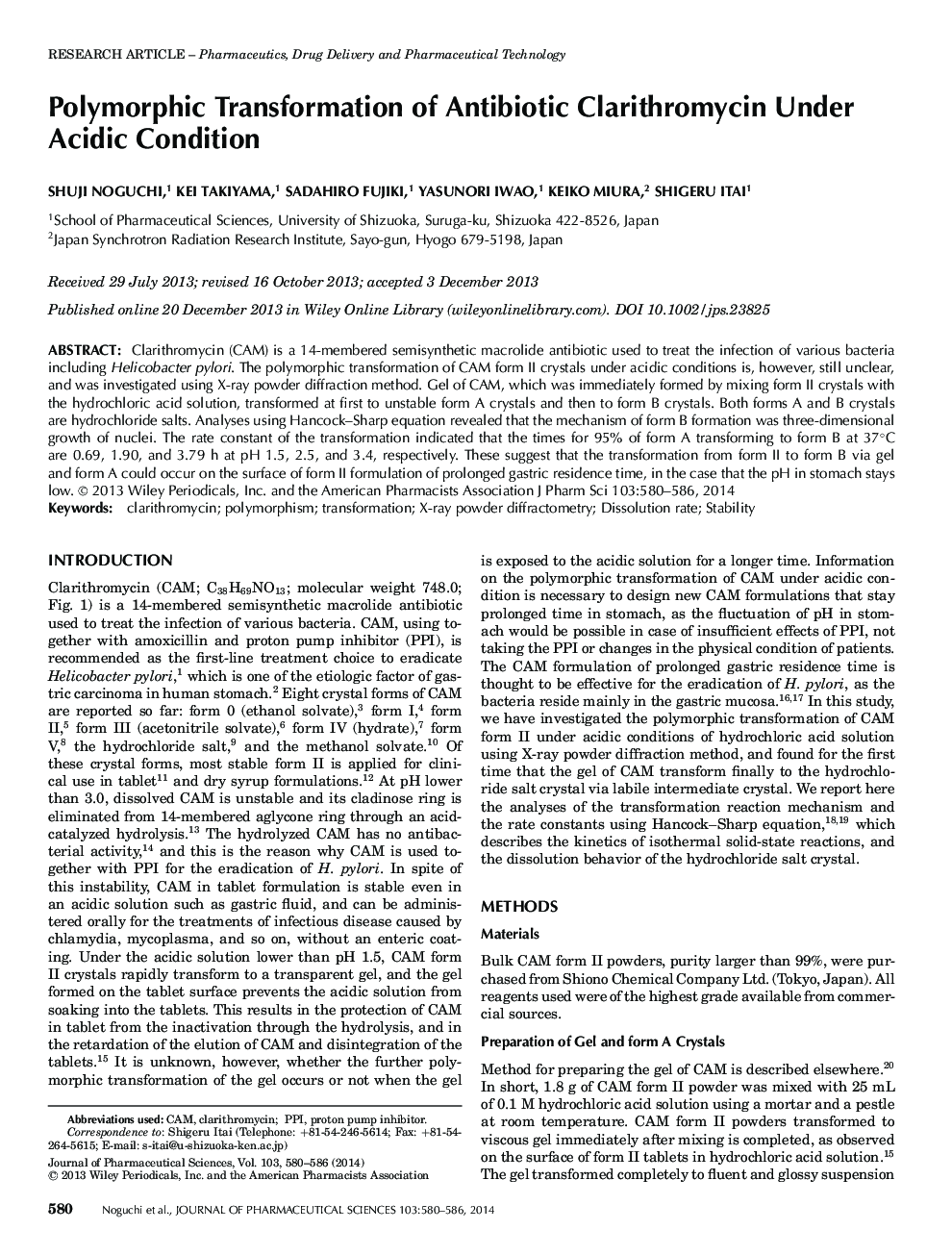| Article ID | Journal | Published Year | Pages | File Type |
|---|---|---|---|---|
| 10162604 | Journal of Pharmaceutical Sciences | 2014 | 7 Pages |
Abstract
Clarithromycin (CAM) is a 14-membered semisynthetic macrolide antibiotic used to treat the infection of various bacteria including Helicobacter pylori. The polymorphic transformation of CAM form II crystals under acidic conditions is, however, still unclear, and was investigated using X-ray powder diffraction method. Gel of CAM, which was immediately formed by mixing form II crystals with the hydrochloric acid solution, transformed at first to unstable form A crystals and then to form B crystals. Both forms A and B crystals are hydrochloride salts. Analyses using Hancock-Sharp equation revealed that the mechanism of form B formation was three-dimensional growth of nuclei. The rate constant of the transformation indicated that the times for 95% of form A transforming to form B at 37°C are 0.69, 1.90, and 3.79 h at pH 1.5, 2.5, and 3.4, respectively. These suggest that the transformation from form II to form B via gel and form A could occur on the surface of form II formulation of prolonged gastric residence time, in the case that the pH in stomach stays low.was fitted to the ratio.
Keywords
Related Topics
Health Sciences
Pharmacology, Toxicology and Pharmaceutical Science
Drug Discovery
Authors
Shuji Noguchi, Kei Takiyama, Sadahiro Fujiki, Yasunori Iwao, Keiko Miura, Shigeru Itai,
